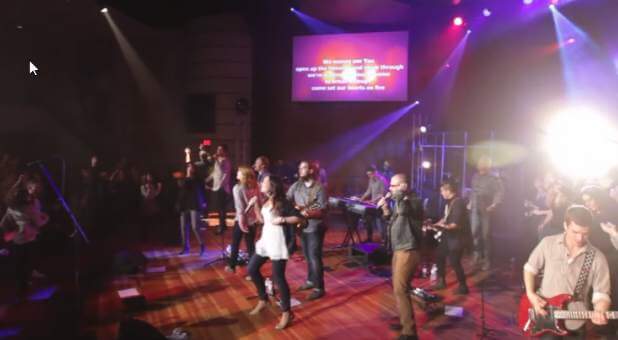In this two-part series, we will explore the 10 roots of contemporary church models. To read part 1, click here. The following are the final five models:
Reformation Model (confessional/Scripture-focused)
The Protestant Reformation was a move away from papal authority, extra-biblical traditions and institutional hierarchical titles and positions like the offices of bishop and cardinal. In place of church canon law and tradition, the focus was on the Bible as the only standard of the faith as well as a healthy respect for historic church councils and creeds of the first six centuries, along with the writings of the historical church fathers.
In addition to the above-mentioned councils and creeds, there was also a focus on the development of confessions, theological writings and catechisms. Also, the rejection of the office of bishop took away the only form of ecclesial government that was able to keep the church united. Consequently, the church eventually divided into numerous denominations and autonomous churches that compromised the ability of the church to speak authoritatively to culture.
This 16th-century Reformation is the root of all present-day historic Protestant denominations (Lutheran, Reformed, Presbyterian) as well as Independent fundamentalist churches (for example, independent Baptist churches).
Pietistic Model (personal/subjective faith)
In response to the dead, corporate state churches of Protestantism, a movement arose in the 17th century called Pietism that emphasized individual salvation with a personal witness in the Spirit that gave assurance of a believer’s salvation. Pietism de-emphasized the need for church creeds, councils and confessions and prioritized the Bible and prayer to cultivate an intimate personal relationship with Jesus.
This movement eventually became the catalyst for the Moravian movement (in the lineage of John Hus, which eventuates in the movement led by Nicholas von Zinzendorf) that led a 100-year prayer movement (called “The Lord’s Watch” in the 17th century that resulted in the modern-day missionary and revivalist movements). Pietism is also the root of present day Christian “mystics ” and even the 20th century Christian version of Postmodernism (as espoused by theologians like Soren Kierkegaard).
Enlightenment Model (liberal Christianity)
In the 17th century, Isaac Newton discovered “natural law” and demonstrated that truth can be discovered without divine revelation. This had vast implications and led to the separation of truth from Scripture and the dividing of science from faith, which is referred to as the “Enlightenment”—which eventually led to belief systems such as deism and naturalistic evolution (which framed reality without the existence and or participation of a divine being).
Out of this arose liberal theologians and theology which placed natural knowledge, culture and the sciences as the primary lens through which to interpret the Bible. Hence, the values and discoveries of society trumped the eternal values of Scripture, which eventually led to professing Christians and some denominations denying the supernatural elements of the Bible, including a denial of the bodily, historical resurrection of Jesus Christ.
Thus, the Enlightenment model is the root of the present-day departure from the faith in many, if not most, historic Protestant denominations, which has infiltrated segments of the Lutheran, Methodist, Reformed, Presbyterian, Episcopal church and beyond.
Revival Model (awakening/renewal/Pentecostal)
Out of the 17th-century Pietistic Moravian movement arose a revival model of Christianity as advanced by the first Great Awakenings that revolutionized both England and the colonies of the present-day U.S.
Both John and Charles Wesley were converted by Moravian missionaries, and eventually this also converted George Whitfield. All three of these men preached an individual form of salvation, de-emphasized the state church and creeds, and saw revivals that altered forever the body of Christ.
This revival model became the root of the 19th-century holiness movement, the 20th century Pentecostal movement, the mass evangelistic crusades of evangelists like D.L. Moody of the 19th century and Billy Graham of the 20th century, the 1950s charismatic movement that swept through every denomination including Roman Catholicism as well as modern-day evangelicalism, and beyond.
Restoration Model (The way of Christ and the Apostles)
The first-century church of the New Testament book of Acts and the epistles was decentralized institutionally but united in heart and mind to advance Christ’s kingdom (Acts 2:42-47 and Eph. 4:11-16).
Around 1948 in Canada, there arose a movement called the “Latter Rain Movement” that began preaching the restoration of the five cluster gifts (Eph. 4:11), the gift of prophecy (1 Cor. 14:1-5), prophetic presbyteries (1Tim. 4:14), the gifts of the Spirit (1Cor. 12:4-8), as well as the kingdom of God.
This movement has continued to grow exponentially (even though the name “Latter Rain” is no longer used) and presently the fastest growth of Christianity globally are charismatic, Independent, Christian networks led by apostolic- and prophetic-type visionaries who desire to mimic first-century Christianity as found in the New Testament. Although this movement is Bible-focused and robust, it still walks in the individualistic Greek paradigm (the third model in part one of this two-part series) and not in the Hebraic corporate mindset of the original Jerusalem and Antioch church models (models one and two in part 1).
This has resulted in numerous Independent apostolic-type leaders and movements who are territorial and don’t collaborate with other apostolic leaders and networks. I believe the next phase will be earmarked by a focus on the kingdom of God, which alone has the ability to unite all expressions of Christianity—including charismatic, and non-charismatic evangelicals and evangelical Roman Catholics, Orthodox and Anglicans.
This kingdom focus will eventuate in a Jesus Reformation, in which the ever-evolving focus will be on the King of the kingdom more than merely on the work of the kingdom. This will prepare the way for the glorious church Jesus is returning to receive (Eph. 5:27) and the consummation of human history in which all things will be united in Christ (Eph. 1:9-11) who in turn will be subject to the Father so that God will be all in all (1 Cor. 15:24-28).















































